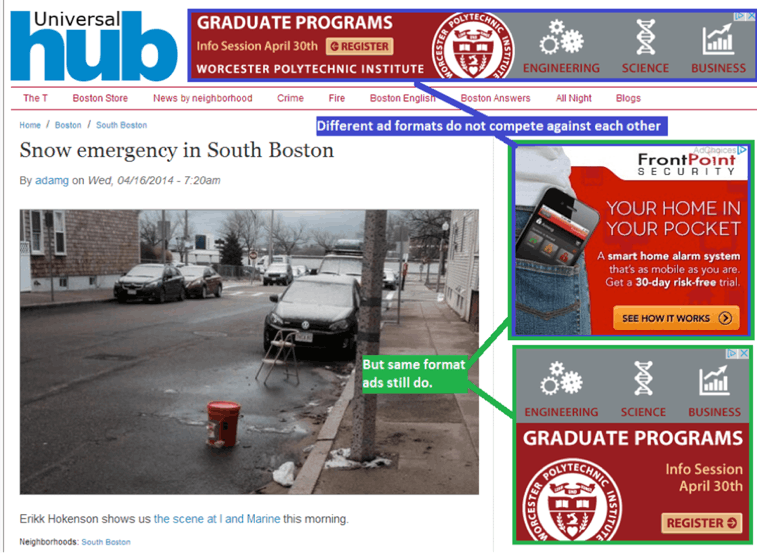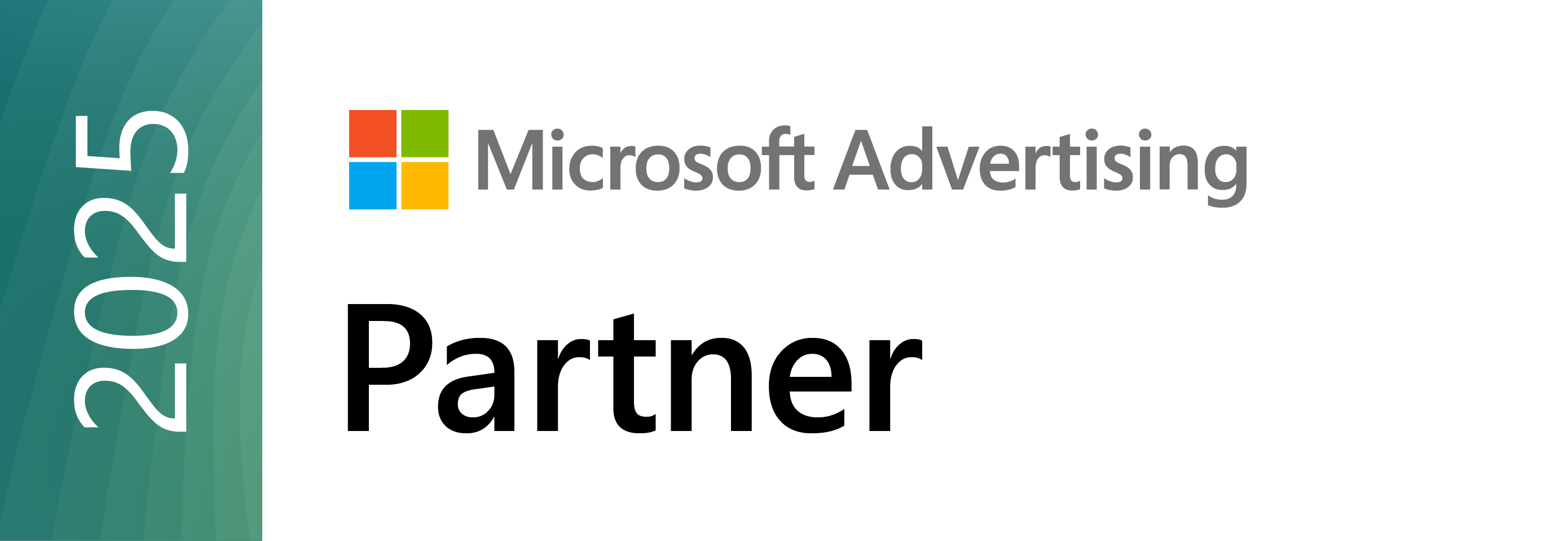
One day you’re browsing Amazon for a suitcase…
The next you’re being wooed by Tumi on Facebook.
Is this sorcery? Only slightly.
It’s remarketing (or retargeting).
And for B2C and B2B brands alike, it’s one of the most powerful digital advertising tools that herds people back to your website and “nudges” them into conversions.
Remarketed users are 70% more likely to convert. Source: Marketing Mentor
Before we dive into why it’s an absolute must in any CMO’s digital toolkit, let’s define what remarketing is and how it works.
Remarketing shows ads to people who visited your website or used an app but didn’t convert. Unlike other pay-per-click (PPC) methods, remarketing only targets users who scoped out your digital digs and didn’t complete an action – like fill out a form, make a phone call or buy a product.
It’s like email marketing without an email list.
Take Veronica, for example. She visited your site, poked around the services section and bounced. With remarketing, display ads pepper her on Facebook and other websites within the Google Display Network.
Your remarketing drones give her that little extra push, and she clicks the ad and requests a quote. Woo-hoo! You didn’t even have to result to black-hat SEO tactics.
Remarketing is remarkably simple. You insert a snippet of code on your website, called a remarketing tag or Facebook pixel, and decide whether to track all site traffic or segment certain pages.
The nitty-gritty: learn how to implement remarketing on Google and Facebook.
That said, the strength of remarketing lies in its ability to serve up hyper-targeted content to the right person at the right stage of the buying cycle. And that’s where remarketing lists (Custom Audiences on Facebook) come into play.

You create custom lists that sort users into categories and tell Google and Facebook exactly which ads to display. The guy who browsed a product page and bolted. The gal who visited your landing page but didn’t download the white paper. The gentleman who abandoned his shopping cart without buying (we’ve all been there).
They’d each land on a separate list, and be shown a different ad with different calls to action (CTAs). It’s also completely possible, and quite common, for users to visit multiple pages. This makes them eligible for many ads.
That’s how remarketing works. Now the good stuff. Let’s talk ROI.
Remarketing never fails to make us burst into spontaneous dance parties. If properly executed, like by a great digital agency that rhymes with noodle, it can beat the pants off all other forms of digital advertising.
Need proof? Soak up these powerful stats:
If these results don’t get you excited about remarketing, then perhaps this gif of a hedgehog swimming in circles will.

The success of a remarketing campaign depends entirely on your goals as well as the type of campaign you’re running: branding or direct response.
With a branding campaign , all you care about is generating buzz about your company, a product or a service. The remarketing metrics that matter most to you (and your agency) are:
For direct response campaigns , you’re swinging a lead-generating sledgehammer with the mission of snagging as many conversions as possible. The goals are:
The best part about remarketing? It’s extremely fluid, so you can adjust campaigns on the fly to improve results and prevent wasted spend – tweak ad copy or visuals, optimize landing pages, adjust frequency or shuffle users to different lists.
Also read: 3 Reasons Your Last Digital Campaign Failed
Most people barely scratch the surface of what remarketing can do. They group all web traffic into one list and blast it with the same ad. It works and gets conversions. But it’s kind of like buying an iPhone just to make phone calls. It can do that really well, but it’s so, so much more.
Upsell and cross-sell
The story doesn’t end after a conversion. From maintenance plans and rewards programs to coupons and cross-selling opportunities, remarketing offers virtually infinite ways to inflate your bottom line both during and after a sale.
Integrate with your CRM and email marketing platform
Export a customer relationship management (CRM) email list to your remarketing platform of choice, like AdRoll, to reach prospects beyond the inbox. Don’t have a CRM? With Customer Match, you can export email lists from providers like Constant Contact, MailChimp or Campaign Monitor.

Remarket to people who’ve never been your site
Wait, what? That’s right. They may not have visited your site, but with search retargeting, you can show display and Facebook ads to them if they’ve searched for keywords relevant to your brand. Pretty awesome, huh?
Turn blog readers into subscribers
Create a remarketing list just for blog visitors that alerts them every time you post a new story and encourages them to subscribe. It’s like email marketing without an email list.
Supercharge your content to close the sales gap
For brands with a long sales cycle, consider remarketing with content – such as blog posts, white papers, case studies, etc. – to nurture prospects and give them that extra reason to buy.
Expand your reach on YouTube
The world’s second largest search engine isn’t Bing, it’s YouTube: home to ridiculously low costs per view (CPVs). On top of video remarketing, you can target viewers with standard text and display ads. Speaking of YouTube, have you read our Ultimate YouTube Advertising Guide?
Put a (frequency) cap on it
Or risk becoming the stalker brand that annoys the crap out of everyone and pushes buyers away. Frequency caps limit the amount someone sees your ads. It can be monthly, weekly or even daily. What should your frequency be? We recommend starting high, then adjusting until you strike the balance of frequency and desired result (clicks, conversions, impressions, whatever your goals are).
30% of consumers have a positive or very positive reaction to retargeted ads. Source: CMO
Amplify high-value pages
Remarketing to a user who visited your homepage for two seconds before bouncing is a huge waste. Instead, focus on the one who spent a few minutes on your most important pages, like products, services, demos or about us. You can segment any audience by geographic location, time on site and pages-per-visit to craft uber-concentrated ads that pay off fast.
Get testy
Split test ads by changing headlines, graphics or different color CTAs. Just don’t go overboard by tweaking too much at once, or you won’t know which adjustment had the biggest impact.
Ad formats: mix ’em up
Google Display Network allows for 14 different sizes of ads – none of which compete with each other. By diversifying your ad formats, you’ll increase your chances of landing in a better page position. Here’s an example, courtesy of HubSpot:

Stop your ads from showing in the web’s darkest corners
If you’re a theme park, you don’t want your ad showing up on a news story about a rollercoaster fatality. Prevent your brand from getting a black eye by excluding site categories on the Google Display Network. You can block sensitive content like crime, death, profanity or sexually suggestive subjects.
On the fence about whether remarketing is right for your brand? Wondering if it’s even ethical? Consider this: 30% of consumers have a positive or very positive reaction to retargeted ads, compared to just 11% who view them as negative and a whopping 59% who have a neutral opinion.
Truth is, the whole “remarketing is creepy” debate really isn’t a debate at all. Remarketing works, and unlike other advertising methods, it gives us the unique ability to give users exactly what they want, like a coupon for that pack of hot dogs they were eyeing.
Heck, we even use it ourselves.
What kind of results will your brand see from remarketing? We’d love to have that conversation with you.
Get marketing insights that actually move the needle — directly in your inbox.



